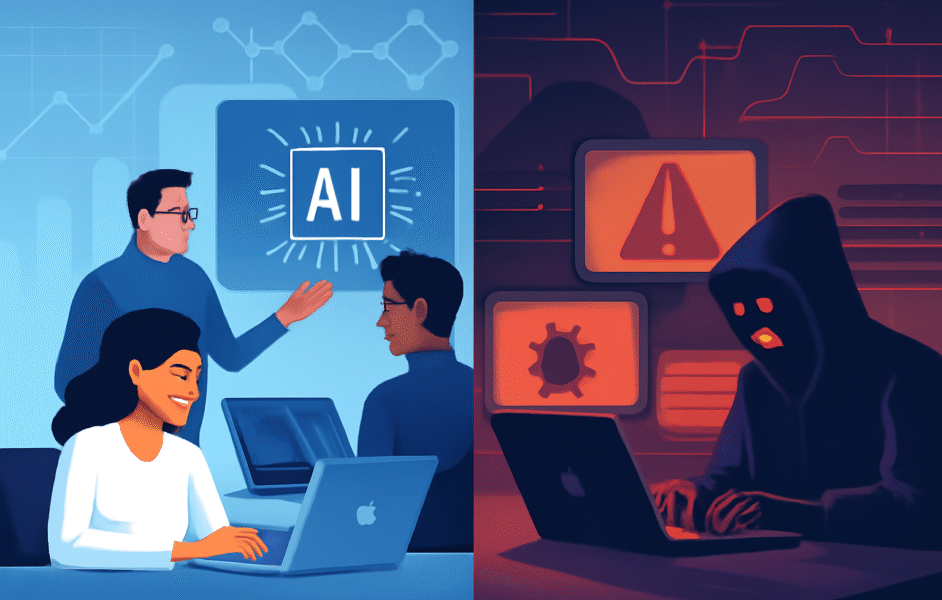As extra companies undertake AI, working out its safety dangers has grow to be extra necessary than ever. AI is reshaping industries and workflows, however it additionally introduces new safety demanding situations that organizations will have to deal with. Protective AI techniques is very important to deal with believe, safeguard privateness, and make sure clean trade operations. This newsletter summarizes the important thing insights from Cisco’s contemporary “State of AI Security in 2025” record. It provides an outline of the place AI safety stands as of late and what firms will have to believe for the long run.
A Rising Safety Risk to AI
If 2024 taught us anything else, it’s that AI adoption is shifting sooner than many organizations can safe it. Cisco’s record states that about 72% of organizations now use AI of their trade purposes, but most effective 13% really feel absolutely able to maximise its doable safely. This hole between adoption and readiness is in large part pushed by means of safety considerations, which stay the primary barrier to wider endeavor AI use. What makes this case much more relating to is that AI introduces new sorts of threats that conventional cybersecurity strategies aren’t absolutely provided to maintain. Not like typical cybersecurity, which regularly protects mounted techniques, AI brings dynamic and adaptive threats which are tougher to expect. The record highlights a number of rising threats organizations will have to take note of:
- Infrastructure Assaults: AI infrastructure has grow to be a first-rate goal for attackers. A notable instance is the compromise of NVIDIA’s Container Toolkit, which allowed attackers to get entry to record techniques, run malicious code, and escalate privileges. In a similar way, Ray, an open-source AI framework for GPU control, used to be compromised in probably the most first real-world AI framework assaults. Those circumstances display how weaknesses in AI infrastructure can have an effect on many customers and techniques.
- Provide Chain Dangers: AI provide chain vulnerabilities provide some other vital fear. Round 60% of organizations depend on open-source AI elements or ecosystems. This creates possibility since attackers can compromise those extensively used equipment. The record mentions a method referred to as “Sleepy Pickle,” which permits adversaries to tamper with AI fashions even after distribution. This makes detection extraordinarily tough.
- AI-Explicit Assaults: New assault ways are evolving all of a sudden. Strategies comparable to recommended injection, jailbreaking, and coaching information extraction permit attackers to avoid protection controls and get entry to delicate knowledge contained inside coaching datasets.
Assault Vectors Focused on AI Techniques
The record highlights the emergence of assault vectors that malicious actors use to take advantage of weaknesses in AI techniques. Those assaults can happen at quite a lot of phases of the AI lifecycle from information assortment and fashion coaching to deployment and inference. The purpose is regularly to make the AI behave in unintentional techniques, leak non-public information, or perform destructive movements.
Over contemporary years, those assault strategies have grow to be extra complex and tougher to locate. The record highlights various kinds of assault vectors:
- Jailbreaking: This method comes to crafting antagonistic activates that bypass a fashion’s protection measures. In spite of enhancements in AI defenses, Cisco’s analysis presentations even easy jailbreaks stay efficient in opposition to complex fashions like DeepSeek R1.
- Oblique Recommended Injection: Not like direct assaults, this assault vector comes to manipulating enter information or the context the AI fashion makes use of not directly. Attackers might provide compromised supply fabrics like malicious PDFs or internet pages, inflicting the AI to generate unintentional or destructive outputs. Those assaults are particularly unhealthy as a result of they don’t require direct get entry to to the AI gadget, letting attackers bypass many conventional defenses.
- Coaching Knowledge Extraction and Poisoning: Cisco’s researchers demonstrated that chatbots will also be tricked into revealing portions in their coaching information. This raises critical considerations about information privateness, highbrow belongings, and compliance. Attackers too can poison coaching information by means of injecting malicious inputs. Alarmingly, poisoning simply 0.01% of huge datasets like LAION-400M or COYO-700M can have an effect on fashion habits, and this will also be finished with a small funds (round $60 USD), making those assaults available to many unhealthy actors.
The record highlights critical considerations concerning the present state of those assaults, with researchers attaining a 100% good fortune price in opposition to complex fashions like DeepSeek R1 and Llama 2. This unearths vital safety vulnerabilities and doable dangers related to their use. Moreover, the record identifies the emergence of recent threats like voice-based jailbreaks which can be particularly designed to focus on multimodal AI fashions.
Findings from Cisco’s AI Safety Analysis
Cisco’s analysis workforce has evaluated quite a lot of sides of AI safety and printed a number of key findings:
- Algorithmic Jailbreaking: Researchers confirmed that even most sensible AI fashions will also be tricked routinely. The use of one way referred to as Tree of Attacks with Pruning (TAP), researchers bypassed protections on GPT-4 and Llama 2.
- Dangers in Wonderful-Tuning: Many companies fine-tune basis fashions to strengthen relevance for particular domain names. On the other hand, researchers discovered that fine-tuning can weaken inside protection guardrails. Wonderful-tuned variations had been over 3 times extra liable to jailbreaking and 22 occasions much more likely to provide destructive content material than the unique fashions.
- Coaching Knowledge Extraction: Cisco researchers used a easy decomposition option to trick chatbots into reproducing information article fragments which permit them to reconstruct assets of the fabric. This poses dangers for exposing delicate or proprietary information.
- Knowledge Poisoning: Knowledge Poisoning: Cisco’s workforce demonstrates how simple and affordable it’s to poison large-scale internet datasets. For approximately $60, researchers controlled to poison 0.01% of datasets like LAION-400M or COYO-700M. Additionally, they spotlight that this degree of poisoning is sufficient to reason noticeable adjustments in fashion habits.
The Function of AI in Cybercrime
AI isn’t just a goal – it is usually turning into a device for cybercriminals. The record notes that automation and AI-driven social engineering have made assaults more practical and tougher to identify. From phishing scams to voice cloning, AI is helping criminals create convincing and customized assaults. The record additionally identifies the upward push of malicious AI equipment like “DarkGPT,” designed particularly to assist cybercrime by means of producing phishing emails or exploiting vulnerabilities. What makes those equipment particularly relating to is their accessibility. Even low-skilled criminals can now create extremely customized assaults that evade conventional defenses.
Absolute best Practices for Securing AI
Given the risky nature of AI safety, Cisco recommends a number of sensible steps for organizations:
- Set up Chance Around the AI Lifecycle: It is necessary to spot and cut back dangers at each and every degree of AI lifecycle from information sourcing and fashion coaching to deployment and tracking. This additionally comprises securing third-party elements, making use of sturdy guardrails, and tightly controlling get entry to issues.
- Use Established Cybersecurity Practices: Whilst AI is exclusive, conventional cybersecurity absolute best practices are nonetheless very important. Tactics like get entry to keep an eye on, permission control, and information loss prevention can play a very important position.
- Center of attention on Susceptible Spaces: Organizations will have to focal point on spaces which are perhaps to be focused, comparable to provide chains and third-party AI programs. By way of working out the place the vulnerabilities lie, companies can put into effect extra focused defenses.
- Teach and Educate Staff: As AI equipment grow to be in style, it’s necessary to coach customers on responsible AI use and possibility consciousness. A well-informed personnel is helping cut back unintended information publicity and misuse.
Having a look Forward
AI adoption will continue to grow, and with it, safety dangers will evolve. Governments and organizations international are spotting those demanding situations and beginning to construct insurance policies and laws to lead AI protection. As Cisco’s record highlights, the steadiness between AI protection and development will outline the following technology of AI building and deployment. Organizations that prioritize safety along innovation might be absolute best provided to maintain the demanding situations and snatch rising alternatives.
Source link

